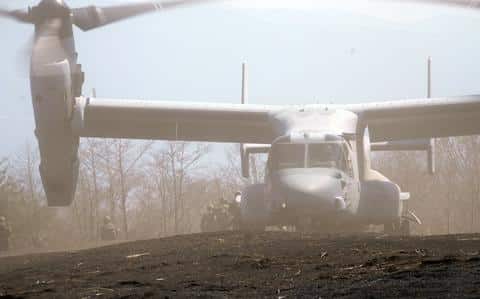Marine Ospreys flights resume after safety pause; other tiltrotors remain
MV-22 Osprey Flights Resume with Safety Restrictions

The U.S. Marine Corps has restarted flying its MV-22B Ospreys after a temporary stop caused by safety concerns. This decision follows an investigation into problems with the aircraft’s metal parts. The pause had grounded the entire fleet of tiltrotor aircraft, including those used by the U.S. Air Force and the Japanese military. Flights have resumed with certain restrictions and will be reviewed after an upcoming interservice meeting.
Safety Issues Lead to Grounding
The MV-22 Ospreys were grounded after a near-crash incident that raised concerns about their safety. Investigations by the Department of Defense focused on whether weakened metal parts played a role. Major Joseph Butterfield from the 1st Marine Aircraft Wing said that the Deputy Commandant for Aviation approved restarting non-essential flights after carefully reviewing the fleet.
Reports revealed that Osprey parts are wearing out faster than expected. The aircraft’s unique tiltrotor design, which allows it to take off like a helicopter and fly like a plane, has been linked to higher accident rates. While Marine Ospreys are flying again, the U.S. Air Force and Japanese tiltrotors remain grounded. The U.S. Navy has not shared any updates on its Osprey fleet.
To reduce risks, Marine flights are now operating under temporary safety rules. These limits allow only essential missions and will be reassessed after further discussions among military branches.
Japan’s Response to Osprey Safety
In Japan, the military has also grounded its 17 Ospreys. Exceptions are only made for critical missions, such as disaster relief. Kimihito Aguin, a spokesperson for Japan’s Ministry of Defense, stated that flight safety is the top priority. Japan’s military briefly resumed Osprey flights in mid-November after they were halted due to an earlier incident where an aircraft tilted dangerously during takeoff.
Airseas validates automated dynamic flight with projected initial 16% fuel and emissions reductions
The Japanese government is working with U.S. officials to ensure the Ospreys are safe to fly. Aguin confirmed that detailed checks will be carried out before full operations resume. Japan’s cautious approach stems from past Osprey accidents, including a crash last year that tragically killed eight U.S. service members near the Japanese coast.
Ongoing Safety Measures
The decision to pause flights earlier was recommended by Vice Adm. Carl Chebi of Naval Air Systems Command. This recommendation followed a near-crash at Cannon Air Force Base, New Mexico, and was made to prevent further risks. The military continues to emphasize safety, highlighting the importance of regular checks and careful operations.
The Osprey’s tiltrotor design offers unique capabilities, but it also comes with challenges. Both the U.S. and Japan are closely monitoring the aircraft’s performance, aiming to balance operational needs with safety precautions. Further reviews and updates are expected soon.
